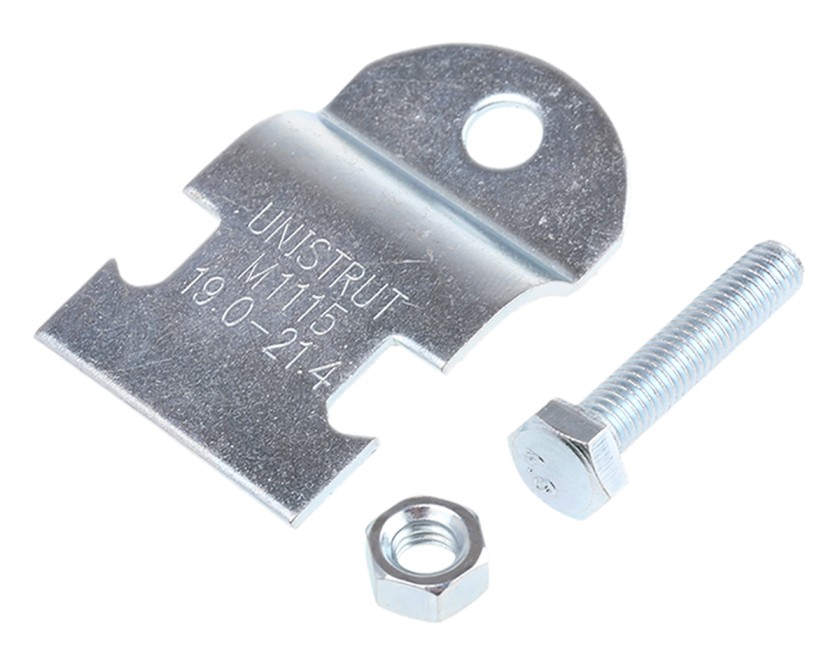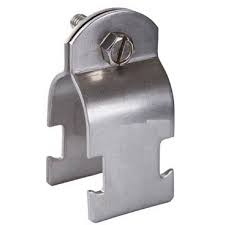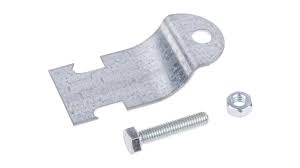What Makes a Steel Pipe Clamp Reliable for Industrial Applications?

What Makes a Steel Pipe Clamp Reliable for Industrial Applications?
In industrial and construction settings, a Steel Pipe Clamp plays a crucial role in supporting and securing pipes. Whether used in plumbing systems, electrical conduit installations, or mechanical assemblies, these clamps ensure the safety and stability of piping layouts. They prevent unwanted movement, reduce vibration, and enhance overall system longevity.
A steel pipe clamp is designed to hold different types of pipes — from water and gas lines to electrical conduits — ensuring they stay firmly in place during operation. These clamps are commonly used with cables, sensors, and connectors in both mechanical and electronic applications.
Understanding the Purpose of Steel Pipe Clamps
A Steel Pipe Clamp provides a secure mechanical connection that prevents pipe displacement. It distributes load evenly, ensuring pipes maintain alignment and integrity even under pressure or vibration.
These clamps are often made from stainless or galvanized steel, providing durability against thermal, corrosive, and mechanical stresses. When paired with pipe strap clamps or unistrut clamps, they create a flexible mounting system adaptable to various environmental conditions.
Key Features of Steel Pipe Clamps
A well-designed pipe clamp is more than just a fastening tool — it’s a component of reliability and precision.
Key features include:
- Material Strength: Steel provides superior tensile strength and resistance to deformation.
- Corrosion Protection: Galvanized or stainless finishes prevent rust in humid or outdoor environments.
- Adjustability: Many clamps can be adjusted to fit different pipe diameters.
- Thermal Stability: Excellent performance under varying temperatures due to steel’s inherent heat resistance.
- Compatibility: Works seamlessly with cables, controllers, fuses, and contactors in industrial setups.
Applications of Steel Pipe Clamps
Steel pipe clamps are versatile and used across multiple sectors. Their strength and adaptability make them suitable for securing both light and heavy-duty installations.
Common applications include:
- Plumbing and HVAC Systems: Secure hot and cold water pipes, air ducts, and refrigerant lines.
- Electrical Installations: Support electrical conduits, connectors, and switches to maintain neat cable management.
- Industrial Machinery: Hold hydraulic and pneumatic lines in position near controllers and microprocessors.
- Oil and Gas Pipelines: Maintain structural integrity in harsh environmental conditions.
- Electronics and Sensors: Provide stable mounting for sensor wiring and thermal components.
Why Steel Pipe Clamps Are Preferred in Modern Systems
The preference for steel over plastic or aluminum clamps lies in its durability and strength. Steel clamps can withstand heavy mechanical stress while maintaining form. In applications involving oils, thermal pads, or electronic circuits, these clamps ensure stability under fluctuating temperatures.
Moreover, their ability to resist corrosion extends their lifespan, especially in outdoor or marine environments. This makes them ideal for industries demanding long-term reliability and minimal maintenance.
Comparing Steel Pipe Clamps and Pipe Strap Clamps
While both clamps serve similar purposes, they differ in construction and mounting technique.
Steel Pipe Clamps:
- Typically feature two halves joined by bolts or screws.
- Offer high load-bearing capacity.
- Used in industrial, plumbing, and mechanical installations.
Pipe Strap Clamps:
- Consist of a single or double strap that wraps around the pipe.
- Suitable for lighter loads or smaller diameter pipes.
- Common in residential or low-pressure applications.
For larger installations requiring vibration resistance, unistrut clamps combined with steel supports are preferred due to their strength and flexibility.
Material and Design Variations
Steel pipe clamps come in different designs based on installation requirements.
Popular types include:
- Standard U-Clamps: Ideal for general pipe support.
- Split-Ring Clamps: Provide easy installation around fixed pipes.
- Cushioned Clamps: Include rubber linings for vibration dampening and thermal protection.
- Heavy-Duty Clamps: Designed for industrial pipelines and high-pressure systems.
Their design ensures compatibility with electronics, connectors, and tools used for maintenance and system expansion.
Installation and Maintenance Guidelines
Installing a steel pipe clamp requires precision and awareness of environmental conditions.
Installation tips:
- Use appropriate tools for tightening to avoid over-compression.
- Maintain alignment between clamps for equal load distribution.
- Ensure the mounting surface is clean and stable.
- Apply anti-corrosion coatings or lubricants for added durability.
Maintenance essentials:
- Inspect clamps regularly for signs of corrosion or fatigue.
- Tighten bolts periodically to ensure continued support.
- Replace damaged clamps immediately to maintain safety and system efficiency.

Benefits of Using Steel Pipe Clamps
Using steel pipe clamps provides a wide range of functional and structural benefits.
Key advantages:
- High Strength: Capable of supporting heavy pipes and components.
- Thermal Resistance: Performs reliably under hot or cold conditions.
- Corrosion Protection: Extends service life in harsh environments.
- Vibration Control: Reduces noise and wear on connected systems.
- Versatile Application: Compatible with cables, connectors, sensors, and controllers in both mechanical and electronic systems.
Integration with Electrical and Electronic Components
In modern installations, steel pipe clamps are often used alongside electronic systems. They secure cables, switches, and LEDs in organized layouts, especially in smart building infrastructures and industrial automation.
When used with microcontrollers, capacitors, and thermal assemblies, they prevent movement that can lead to electrical shorts or mechanical damage. Their robust design ensures long-term reliability in environments exposed to vibration or thermal expansion.
Factors to Consider When Selecting a Steel Pipe Clamp
Choosing the right steel pipe clamp involves assessing various performance parameters.
Consider the following:
- Pipe diameter and weight capacity.
- Environmental conditions such as humidity or heat exposure.
- Compatibility with unistrut clamps or mounting rails.
- Required resistance to vibration and corrosion.
- Maintenance accessibility and installation convenience.
Selecting the correct type ensures both operational efficiency and extended equipment life.
Conclusion
A Steel Pipe Clamp is an essential component in any piping or electrical system, offering stability, safety, and reliability. Whether for mechanical installations or electronic frameworks, its durable steel construction guarantees performance under demanding conditions.
By integrating pipe strap clamps and unistrut clamps, industries can achieve optimal support systems that enhance productivity, minimize downtime, and ensure long-term structural integrity.

